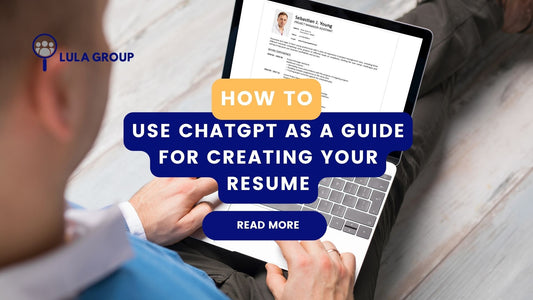This week we focus on the next stop of the recruitment process which is understanding job requirements and creating job descriptions. With a focus on screening candidates as well as interviewing. Ensuring a smooth candidate experience as well as an understanding of your team and the role they play within the recruitment process.
For hiring employees, understanding job requirements and creating accurate and comprehensive job descriptions is crucial. Concise job requirements and well-crafted job descriptions help attract qualified candidates and ensure alignment between the organisation's needs and the candidate's skills and qualifications.
Here are some guidelines for understanding job requirements and creating effective job descriptions:
1. Identify the Purpose and Scope of the Position
Start by clearly understanding the purpose and scope of the position. Determine the key objectives, responsibilities, and deliverables expected from the role. Consider how the position fits into the organisational structure and contribution to overall goals.
2. Consult with Stakeholders
Engage with relevant stakeholders, such as hiring managers, team members, and department heads, to gather insights into the specific needs and requirements of the role. Understand the skills, qualifications, and experience necessary to fulfill the job's responsibilities.
3. Determine Essential and Preferred Qualifications
Essential qualifications are the minimum requirements for the job, such as specific degrees, certifications, or years of experience. Preferred qualifications are desirable but not mandatory and can include additional skills or experience.
Please also refrain from asking an entry level role candidate to have 5 years of experience as this is not ideal. You are not seeking entry level, you're looking for someone a bit more established and therefore the salary will also be higher.
4. Outline Key Responsibilities and Tasks
Identify the primary responsibilities and tasks that the employee will be responsible for. Break the job into specific functions and outline the core duties and responsibilities. Communicate the expectations for each aspect of the role.
5. Include Technical and Soft Skills
Consider the technical skills, knowledge, and expertise required for the role. These may include industry-specific software proficiency, programming languages, or specialised certifications.
Additionally, identify the soft skills needed for success, such as communication, leadership, problem-solving, and teamwork.
6. Consider Experience Level
Determine the experience level required for the position, whether it is an entry-level, mid-level, or senior-level role. This helps candidates assess their fit and provides a guideline for evaluating applicants. Ensure that this matches what you are looking for in an employee and that the salary also matches.
7. Be Clear and Concise
Use clear and concise language in the job description. Avoid jargon or overly technical terms that may confuse potential candidates. Clearly articulate the job requirements, responsibilities, and expectations in an easily understandable way.
8. Use Action-Oriented Language
Use action-oriented language to describe the job duties and requirements. Begin bullet points with action verbs to convey specific actions or accomplishments expected in the role. This helps candidates visualise themselves in the position and understand the level of performance required.
Sourcing candidates and screening resumes
Sourcing candidates and effectively screening resumes is crucial in the hiring process to identify qualified candidates.
Here are some guidelines to help you in these stages of hiring employees:
Sourcing Candidates:
1. Utilise Multiple Channels
Use a variety of channels to source candidates. This includes online job boards, professional networking sites, social media platforms, industry-specific forums, and employee referrals. Leverage traditional and digital methods to reach a broader pool of potential candidates.
2. Build a Talent Pipeline
Develop relationships with potential candidates even when you don't have immediate openings. Attend industry events, participate in job fairs, and engage with professional organisations to connect with talented individuals who may be a good fit for future roles. Build a talent pipeline by maintaining a database of prospective candidates.
3. Optimise Job Postings
Craft compelling job advertisements that clearly outline the job requirements, responsibilities, and desired qualifications. Highlight the unique aspects of your organisation, such as company culture, benefits, and career growth opportunities. Use relevant keywords in your job postings to improve visibility in online searches.
4. Engage in Networking
Networking plays a vital role in sourcing candidates. Attend industry conferences, seminars, and networking events to connect with professionals in your field. Engage with online communities and participate in discussions to establish relationships and identify potential candidates.
Screening Resumes:
1. Define Screening Criteria
Establish specific screening criteria based on the job requirements and qualifications. This includes factors like education, relevant work experience, technical skills, certifications, and any other specific requirements for the role. These criteria will help you filter resumes effectively.
2. Review Resumes Systematically
Develop a systematic approach for reviewing resumes. Start by quickly scanning resumes to ensure they meet the basic requirements. Then, thoroughly evaluate those that meet the initial criteria. Pay attention to the candidate's overall experience, employment history, key achievements, and alignment with the job description.
3. Assess Relevant Skills and Experience
Focus on the candidate's relevant skills and experience directly relevant to the job requirements. Look for specific achievements, responsibilities, and projects demonstrating the candidate's ability to perform the required tasks effectively.
4. Look for Cultural Fit
Consider whether the candidate's values, work style, and attitude align with the organisation's culture. Look for teamwork, adaptability, and alignment with the organisation's mission and values.
5. Attention to Detail
Pay attention to the quality and presentation of the resume. Look for spelling and grammatical errors, formatting consistency, and overall professionalism. Attention to detail in their application materials can indicate the candidate's level of care and professionalism.
6. Use Screening Tools
Consider using applicant tracking systems (ATS) or resume screening software to streamline the screening process. These recruiting tools can help filter resumes based on predefined criteria and keywords, making the initial screening more efficient.
7. Maintain Clear Documentation
Maintain clear documentation of your screening process, including notes on each candidate's qualifications and why they were selected or rejected. This ensures consistency and transparency throughout the hiring process.
Conducting effective interviews
Conducting effective interviews is crucial for selecting the right candidates and hiring employees. Here are some guidelines to help you conduct interviews that provide valuable insights and help you make informed hiring decisions:
1. Prepare in Advance
- Review the candidate's resume and application materials to familiarise yourself with their background and qualifications.
- Develop a list of relevant questions tailored to the specific position and job requirements.
- Familiarise yourself with any legal considerations, such as questions related to protected characteristics.
- Set up the interview environment to ensure a professional and comfortable setting.
2. Structure the Interview
- Begin with an introduction to make the candidate feel comfortable and establish rapport.
- Outline the structure of the interview and explain the process to the candidate.
- Communicate the purpose of the interview and the expectations.
3. Ask Behavioural and Situational Questions
- Utilise behavioural and situational questions to gauge how candidates have approached similar situations or how they would handle hypothetical scenarios.
- Ask open-ended questions that require candidates to provide detailed responses, allowing you to assess their problem-solving abilities and decision-making skills.
4. Use the STAR Method
- Encourage candidates to use the STAR (Situation, Task, Action, Result) method to structure their responses. This helps ensure comprehensive and structured answers.
- Ask follow-up questions to delve deeper into specific aspects of their responses and better understand their experiences.
5. Assess Cultural Fit
- Ask questions that assess how candidates align with the organisation's values, work culture, and team dynamics.
- Evaluate their compatibility with the existing team and their potential for integrating well into the organisation.
6. Listen Actively
- Practice active listening throughout the interview. Give candidates your full attention, maintain eye contact, and avoid interrupting them.
- Take notes to help you remember key points and details about each candidate's responses.
7. Allow Candidates to Ask Questions
- Provide candidates with an opportunity to ask questions about the role, the organisation, or other relevant topics.
- This allows you to assess their interest, engagement, and preparedness.
8. Communicate Clearly
- Clearly explain the next steps of the hiring process and the timeline for decision-making.
- Offer candidates the opportunity to provide additional information or references if necessary.
9. Evaluate and Compare Candidates
- Develop a standardised evaluation process to assess each candidate objectively.
- Use a scoring system or rating scale to assess the candidates against the established criteria.
- Compare candidates based on their qualifications, experience, skills, and cultural fit to determine the best fit for the role.
10. Provide Feedback and Maintain Communication
- Provide constructive feedback to candidates who were not selected. This helps maintain a positive employer brand and fosters goodwill.
- Maintain open and transparent communication with candidates throughout the hiring process, keeping them informed about their status and next steps.
Our next article will cover onboarding your new employee, training, and retaining your talent.
Subscribe for Part THREE on essential tips for employers and don't forget to follow us at Lula Group.




